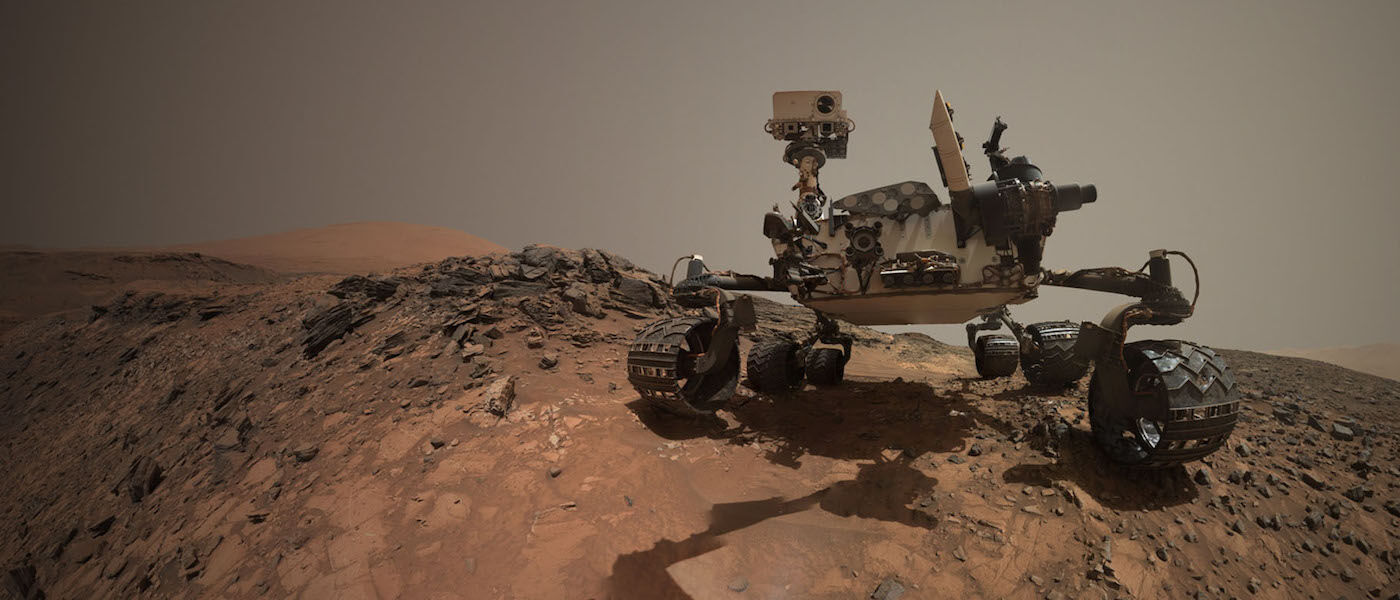5 of our favorite Mars discoveries from throughout history

You’ve probably heard a lot about Summer 2018 being the Summer of Mars! This season, Mars will shine brighter in our sky and come closer to Earth than it ever has in the last 15 years.
Here at Liberty Science Center, we’re celebrating this rare astronomical event on July 27 at our Mars Madness party. We won’t see anything like this again until 2035, and so we’re going to make this a night to remember.
But although Mars will be especially bright and close this summer, the Red Planet actually makes a close approach to Earth about every 26 months, bringing the two planets at a distance of approximately 35 million miles.
During this period when Earth and Mars are nearby, many discoveries about the Red Planet are often made and many Mars missions take place. And so in the days leading up to Mars Madness, we looked back at some of the most iconic discoveries that have been made about Mars, and the people/rovers that made them possible!
Here are five of our favorites from throughout history:
Hall discovers Deimos and Phobos

In 1877, Mars had a close approach to Earth, very similar to this year! During this time, American astronomer Asaph Hall discovered the two moons of Mars – Deimos and Phobos – from a telescope in Washington, D.C.
Mariner 9 finds canyons and volcanoes

The Mariner 9 spacecraft launched in 1971 and orbited Mars for a little over a year, providing us with the first close-up views of Mars’ geological landscape, including volcanoes, canyons, extinct riverbeds, ice clouds, and weather fronts.
Mariner 9 also made many exciting discoveries. A few of these included the Valles Marineris, a giant canyon that would span the entire United States if we brought it to Earth, and the Olympus Mons, which is the largest known volcano in our solar system.
Spirit and Opportunity find water, meteorites, and more

In 2003, the first two Mars Exploration Rovers – Spirit and Opportunity – were launched to the Red Planet!
Spirit, which was planned to only survive 90 days, ended up lasting seven years. In this time, Spirit found evidence that water (or possibly frost) fairly recently altered Mars’ rock surfaces.
Opportunity, like Spirit, was only meant to survive 90 days but has spent over 5,000 days in operation, and still continues to roll on. In July 2014, it set the record for the longest distance a rover has ever traveled off Earth, at 25 miles.
A few more accomplishments? Opportunity discovered an iron meteorite, the first meteorite of any type ever identified on another planet. It also discovered mineral compounds known as hematites, which serve as evidence there were once oceans on Mars.
MRO finds evidence of marsquakes

In 2005, the Mars Reconnaissance Orbiter (MRO) was launched. Still there today, this spacecraft observed the shifting of ice sheets, which served as evidence of marsquakes (like earthquakes, but you know, on Mars!).
The MRO also serves the important role of scouting potential landing sites for future rovers.
Curiosity finds carbon compounds

In 2011, NASA launched its third Mars rover, Curiosity. And just recently, Curiosity discovered carbon compounds, which provides evidence that Mars may have been able to support life in the ancient past.
Curiosity was also the first rover to drill into a rock and collect samples from another world!
Who knows what discoveries we’ll make this time around? We can’t wait to find out! Join us July 27 in our summer celebration of all things Mars. Click here to get tickets for Mars Madness. All ages are welcome.
